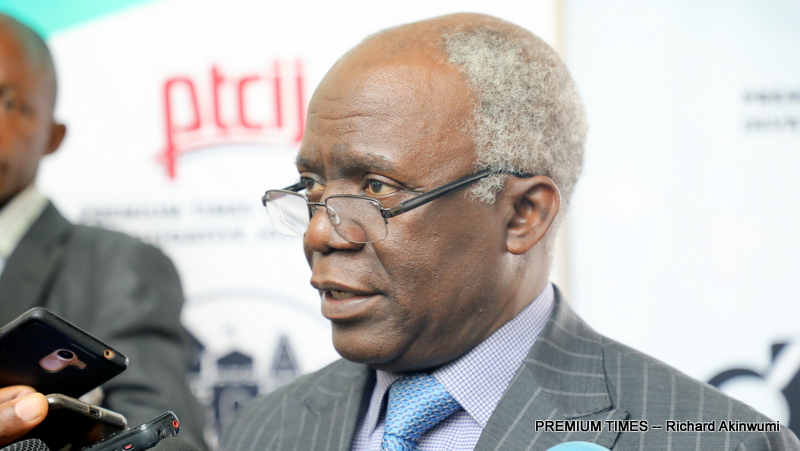Uju, who lives in Area 2, Garki area of Abuja was just 15 when she found out she was five weeks pregnant.
Four years have passed since the incident but as she recounts the story, she was unequivocal when saying that the pregnancy has been the lowest moment of her life till date.
“I went to the hospital to examine the lump in my arm and the doctor said she had to do a test. I wasn’t worried at all; I just thought I was just stressed over exams.
“I will never forget hearing doctor Atteh say ‘you’re pregnant” like an echo and just went numb and started to cry, I enveloped by panic.
“I had only had a boyfriend for six months. We were just stupid and didn’t use contraceptive. I never had proper information about contraception and no talks at home. I never felt so scared in all my life. I thought it was a dream and just had a pain in the pit of my stomach for about a week.
“Telling my mum and dad wasn’t too bad because they thought I was joking. When they realised I wasn’t, I was made to feel bad about it and told I had to leave school and work to support the family.
“Other than thinking what if I die, my main concerned were how would I live? What would I survive on? What if I get kicked out of the house? Who’s going to take me in?”
Uju’s case is not an isolated one. Each year, over 20 million girls (15 to 19 years) in developing countries become pregnant and an estimated 12 million of them give birth. Data from the United Nations Population Fund (UNFPA) has it that no less than 770,000 births occur to adolescent girls below the age of 15 years in developing countries.
Adolescent pregnancy has become a major public health problem, particularly in sub-Saharan Africa, a region also known for the high rate of maternal and child morbidity, and mortality.
According to the Nigerian Demographic Health Survey (NDHS), the adolescent birth rate in 2018 was 106 births per 1,000 women. Bauchi state had the highest number of adolescent births (198), while Imo state had the least. Generally, adolescent births seem to be higher in the North, specifically in the North-Western Zone where the median age of first marriage and first intercourse is approximately 16 years according to the NDHS.
Early pregnancies among adolescents have major health consequences for adolescent mothers and their babies. Pregnancy and childbirth complications are the leading cause of death among girls aged 15–19 years.
Social consequences for unmarried pregnant adolescents may include stigma, rejection or violence by partners, parents and peers. Girls who become pregnant before the age of 18 years are more likely to experience violence within a marriage or partnership. Adolescent pregnancy and childbearing often lead girls to drop out of school, thereby jeopardising their future education and employment opportunities.
New data from the Centre for Social Justice on Sexual and Gender Based Violence and the Budget (A Review of Federal Capital Territory: 2016-2019) shows that the rate of teenage pregnancy in the FCT is higher than the national average.
Among the major findings of the report are that the FCT has more women who have experienced physical violence than the national average. In fact, a proportion of men and women still justify domestic violence.
Although the FCT had less percentage of women circumcised than the national average, it is noteworthy that among those circumcised in the FCT, more proportion of women have their flesh cut and removed than the national average.
In the FCT, more women have unmet need for family planning in terms of limiting the number of children they give birth to when compared to the national average.
The FCT still has over 35 percent of women who give birth at home which reduces the chance of being attended by a skilled health worker and such increases the risk of child and maternal mortality.
The study also found that the FCT has not dedicated sufficient resources nor prioritised freedom from violence for women and girls in its budgeting system. The major budgeting issues bedevilling the FCT towards the elimination of violence against women and girls includes no clear items for issues around prenatal and postnatal care of women, including access to emergency obstetric care for mothers in the FCT Statutory Appropriations reviewed.
In fact, the study found that the FCT has no clear budget plan(s) that set out gender issues as well as sectoral objectives and policies. The absence or unclear nature of FCT plans and policies made it difficult to link the availability of resources to targets or sectoral objectives.
It is also important to point out that the FCT budget preparation process does not link policies, the achievement of objectives and meeting of targets with the funds appropriated.
Both the FCT recurrent and capital budgets reviewed were prepared on an incremental basis (adding a percentage to the previous year’s estimates) without reviewing whether the activities that were funded are in line with policy and whether it should be discontinued. Activities continued from year to year while resources were somehow declining; therefore, some activities were clearly underfunded.
According to the Programme Officer for Gender and Inclusivity at the Centre for Social Justice, Kasiemobi Eze, “The investment (capital) budget which is where most of activities towards the elimination of sexual and gender-based violence were found were made up of a large number of projects, making it more difficult to link the activities funded through the investment budget to the relevant priorities.
Eze said that the budget performance reports for the period 2016-2019 did not meet fit and good practices and standards adding that reporting must be in line with the approved budget, hence, the need for the FCT to adopt International Public Sector Accounting Standards (IPSAS).
She explained that adolescents are at a higher risk for pregnancy-related high blood pressure and its complications than average age mothers.
“This high blood pressure can also harm the kidneys or even be fatal for mother or baby. Pregnant teens have a higher risk of getting pregnancy-induced hypertension than pregnant women in their 20s or 30s,” Eze said.
Medical experts agree that pregnant adolescents also have a higher chance of becoming anaemic. Anaemia is a reduction in the number of red blood cells. This can make mothers feel weak and tired and can affect the baby’s development.
Adolescents are at a higher risk of having premature babies that weigh less than babies normally should (low-birth-weight). In addition, the earlier a baby is born, the more risk there is of respiratory, digestive, vision, cognitive, and other problems. Low birth-weight babies are also 5–30 times more likely to die than babies of normal weight.
If a mother is under 18, her baby’s chance of dying in the first year of life is 60 percent higher than that of a baby born to a mother older than 19.
For Adolescents who have sex during pregnancy, Sexually Transmitted Diseases (STDs) are a major concern. Part of this heavy toll has more to do with poor socio-economic status and lack of ante-natal and obstetric care than physical maturity alone.
Additionally, millions of unsafe abortions among girls aged 15–19 years occur each year, contributing to maternal mortality, morbidity and lasting health problems.
The children of teenage mothers are more likely to have lower school achievement and to drop out of school and have more health problems themselves.
Without adequate support from their parents, adolescents are at risk of not getting antenatal care. Antenatal care is critical in the first months of pregnancy, as it looks for medical problems in both mother and baby, monitors the baby’s growth, and helps to quickly identify any complications that arise. While there is no risk-free pregnancy, a good antenatal care and support can help minimize those risks.
The study recommended the FCT administration to improve funding for the eradication of sexual and gender-based violence by focusing on issues such as adequate funding of prenatal and postnatal care for women including access to emergency obstetric care for mothers in the FCT, family planning goods and services.
It called for specific appropriation of votes to support security agencies especially their Gender Units to ensure proper investigation and prosecution of sexual offences and supporting the FCT Sexual and Gender Based Violence Response Team including support for legal aid and counselling.
There is also the need to educate girls through universal basic education and higher education and ensure the draw down and utilisation of funds meant for FCT in the UBEC Fund. Parents and guardians who refuse to enroll their female children into basic education should be prosecuted.
LEADERSHIP







2 Comments